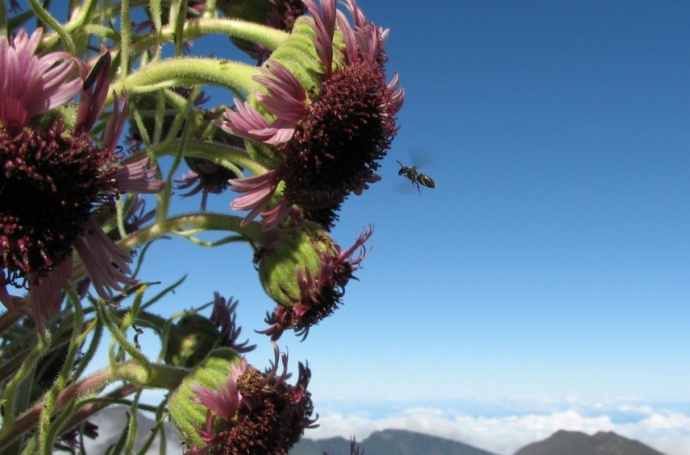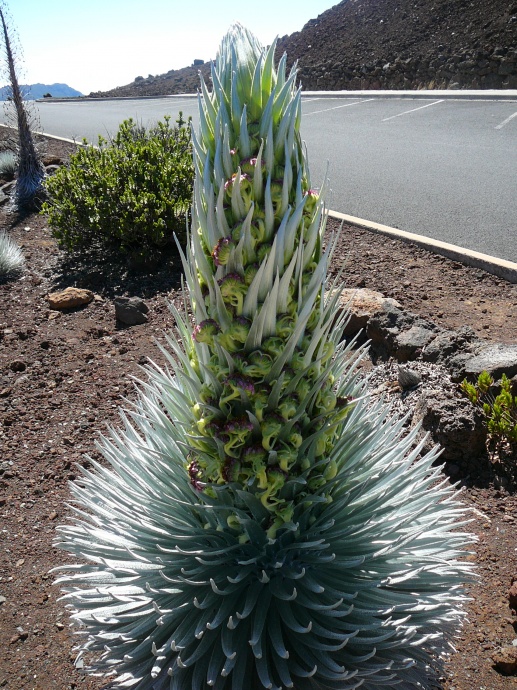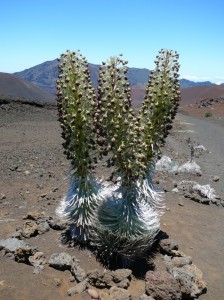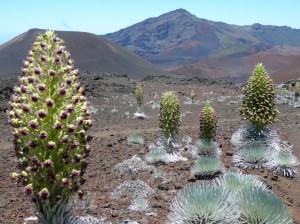Abundance of Silverswords in Rare Bloom at Haleakalā
By Maui Now Staff
Park staff at Haleakalā National Park are reporting an abundance of silversword or ʻāhinahina plants in bloom.
The threatened plants are found nowhere else in the world, flower just once, and die shortly after.
When the plants flower, they produce several thousand viable seeds, which must then take root in the summit’s harsh environment, said Park Superintendent Natalie Gates.
“Long term residents and park staff say this is one of the best years they’ve seen for flowers up here … We hope neighbors and visitors alike will come enjoy this incredible sight,” she said.
Gates said the best way to help the plants is to stay on trails to prevent crushing of existing roots and new seedlings.
According to the National Park Service, the silversword plants can live anywhere from three to 90 years, producing silvery hairs, fleshy leaves, and deep purple flowers.
Park officials say visitors can see ʻāhinahina in bloom at the Kalahaku Overlook, and on 4-6 mile round trip hikes into the summit basin via the Sliding Sands Trail.
Hikers planning to visit the area are advised to dress in layers for changing weather conditions, wear sturdy shoes, and bring water, food and sunscreen with them. Staff advise that it can take twice as long to hike up and out of the crater as it does to hike in.
In an effort to assess the possible effects of climate change on the Haleakalā ʻāhinahina, a year-long study is underway. The study is currently in its final months, with greenhouses set up near the Haleakalā Visitor Center Headquarters for research purposes.
Park staff note that in addition to the silversword plants, visitor can also see the yellow-faced bee pollinating the ʻāhinahina. The bee, found in Hawaiʻi, is the primary pollinator of the silversword plant, and is preyed upon by non-native ants and wasps. The National Park Service advises visitors that they can help to protect this bee species from predators by not littering and by picking up trash.
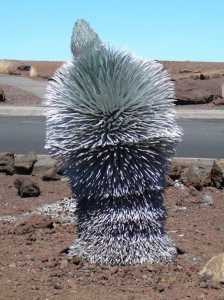
Silversword plant in a pre-bloom stage at the summit of Haleakalā. Photo courtesy National Park Service.



